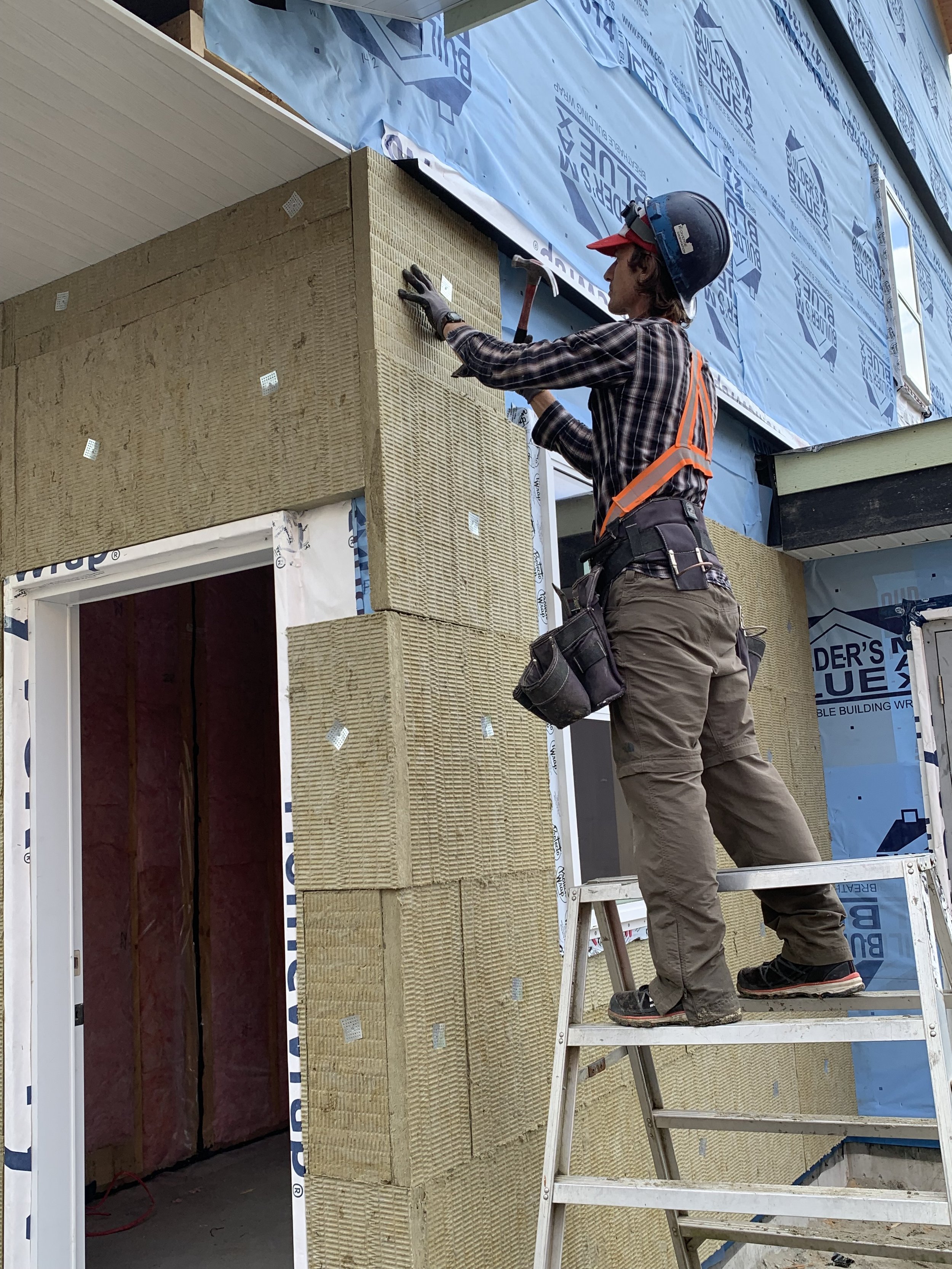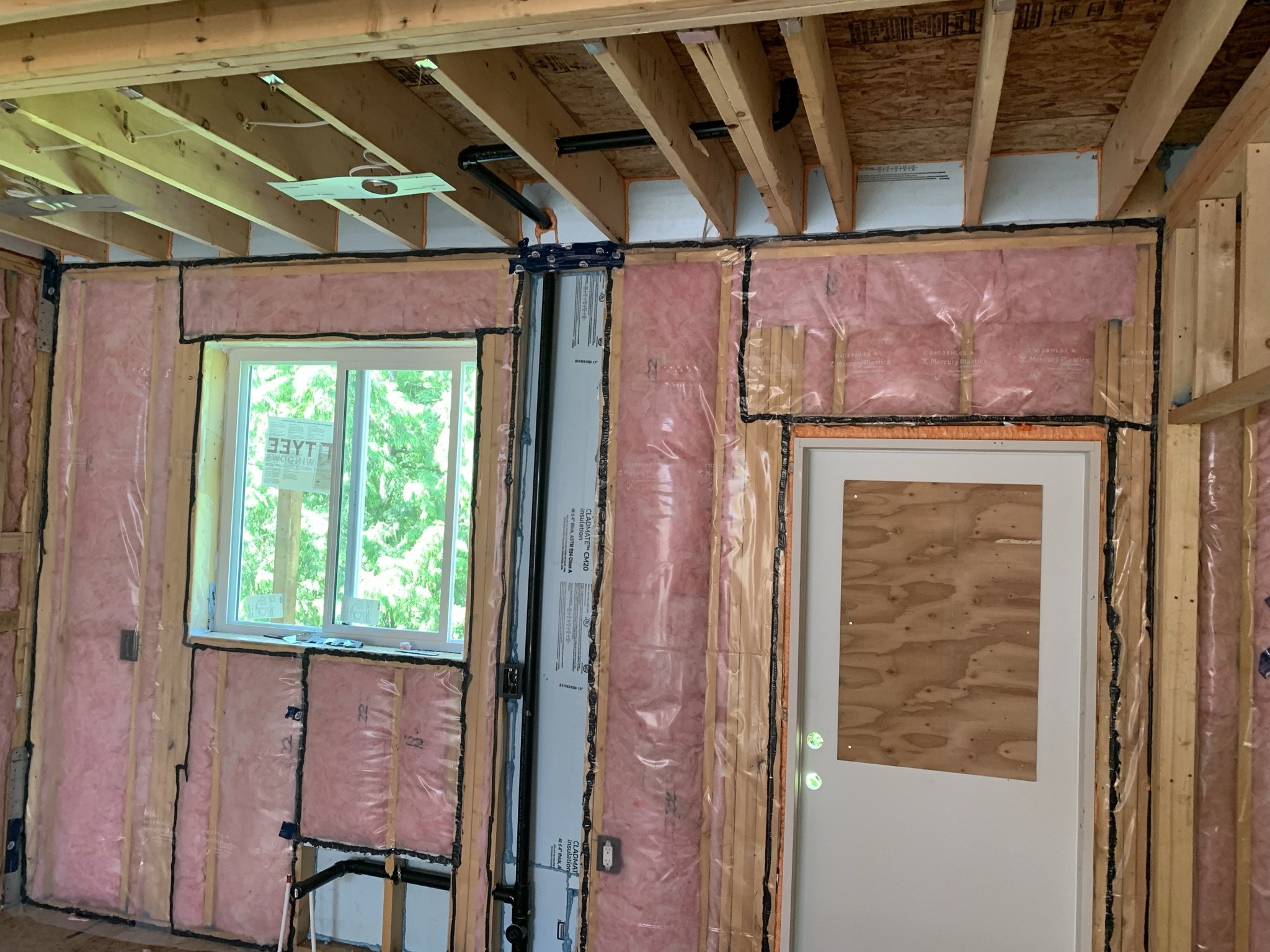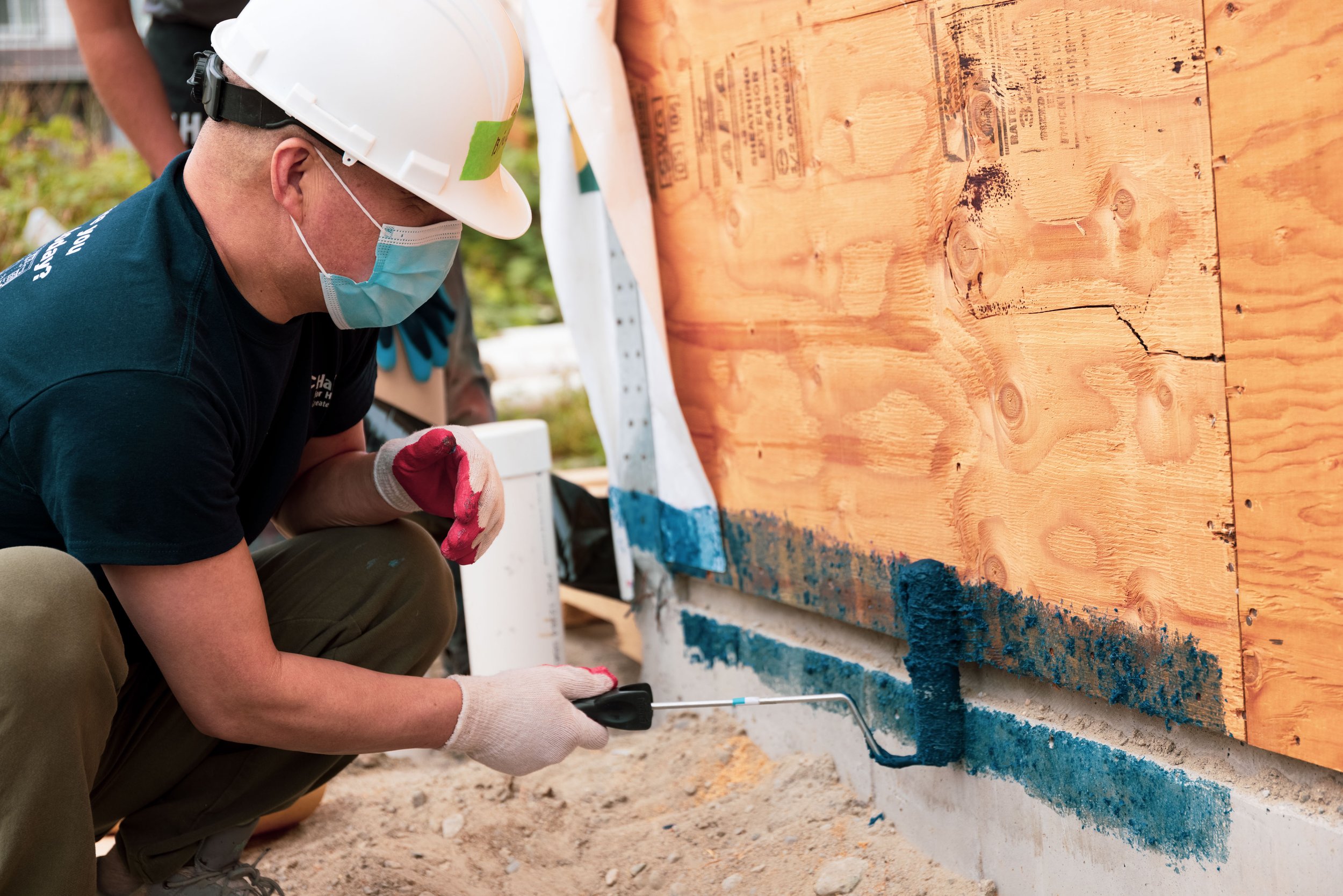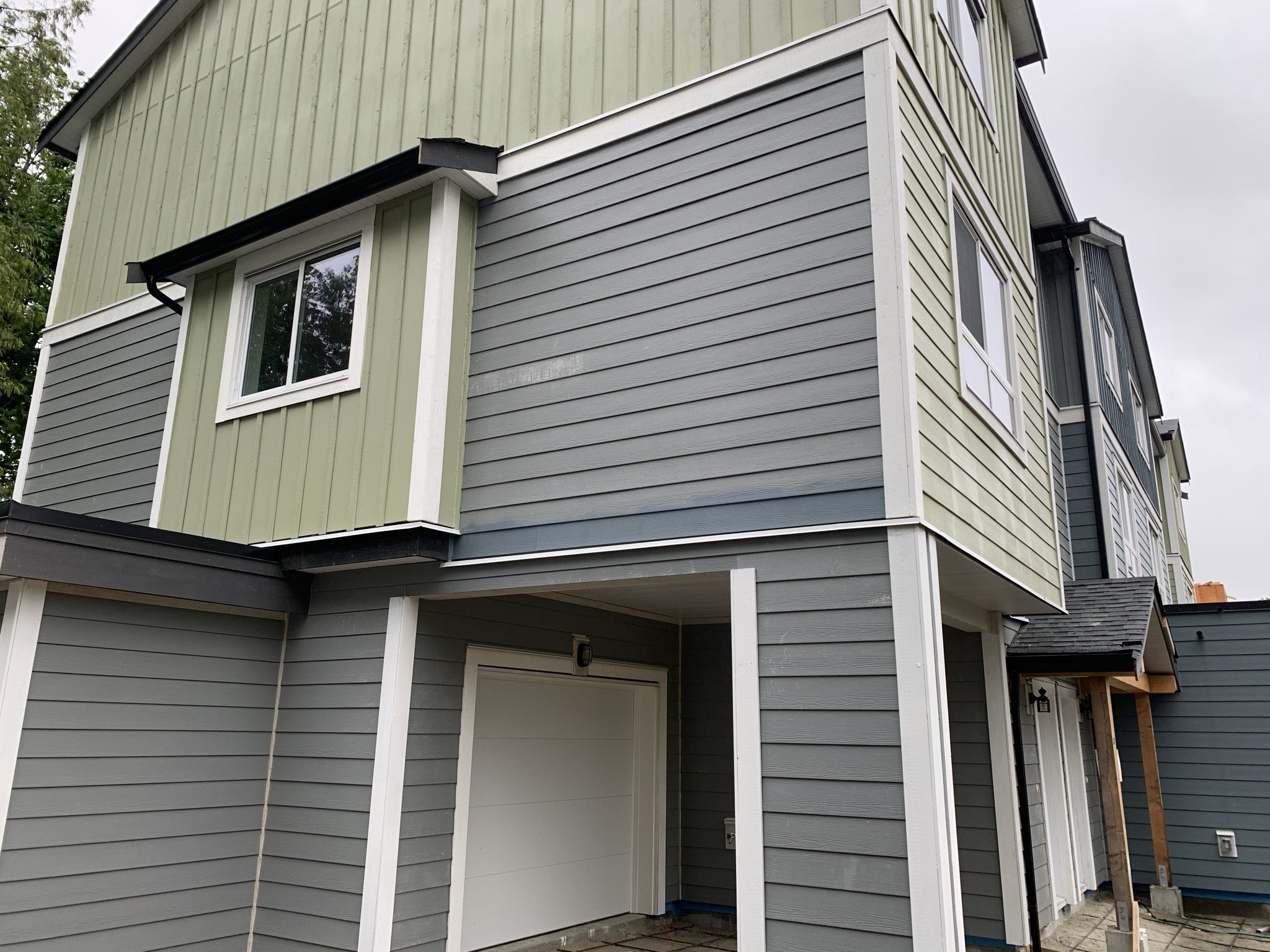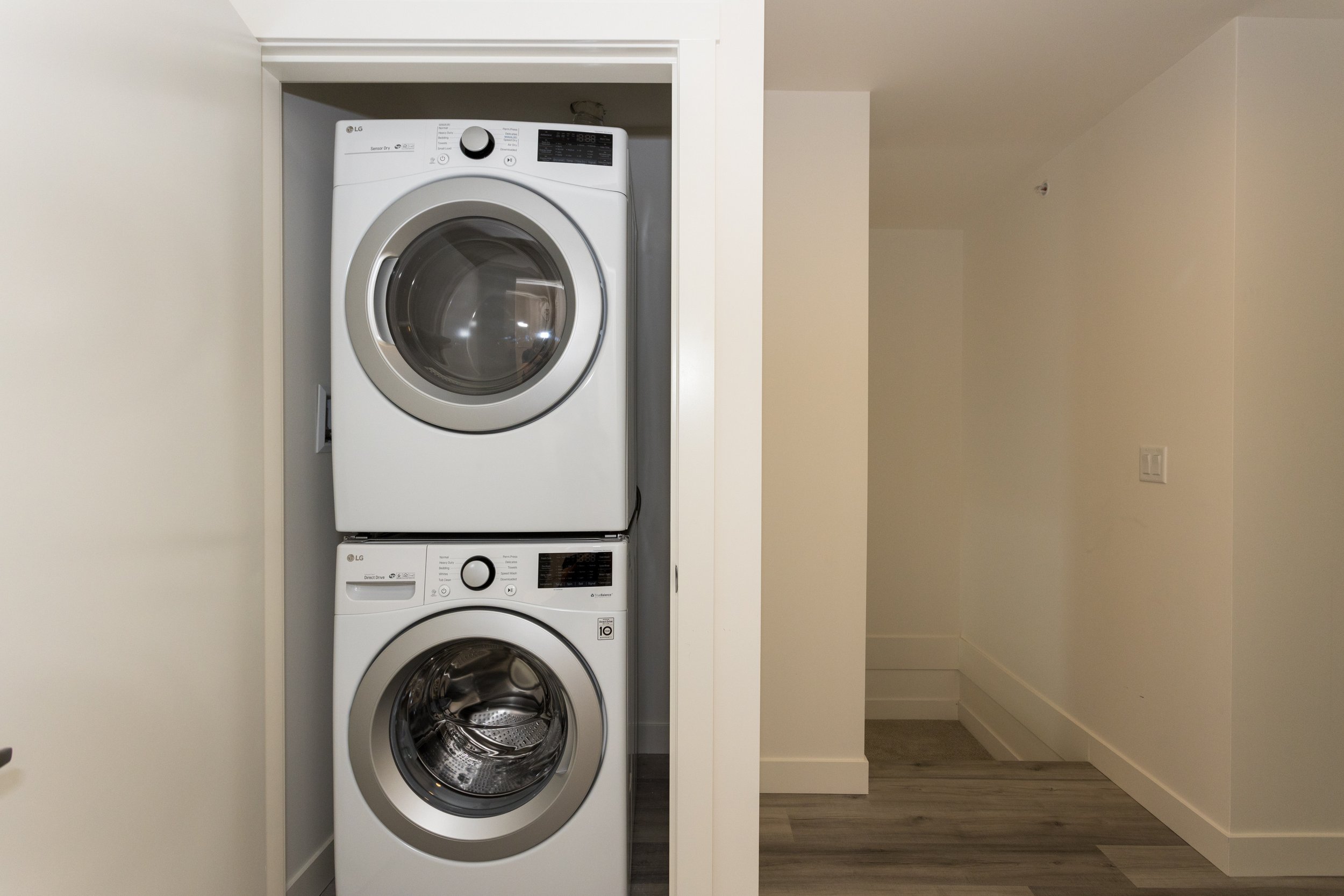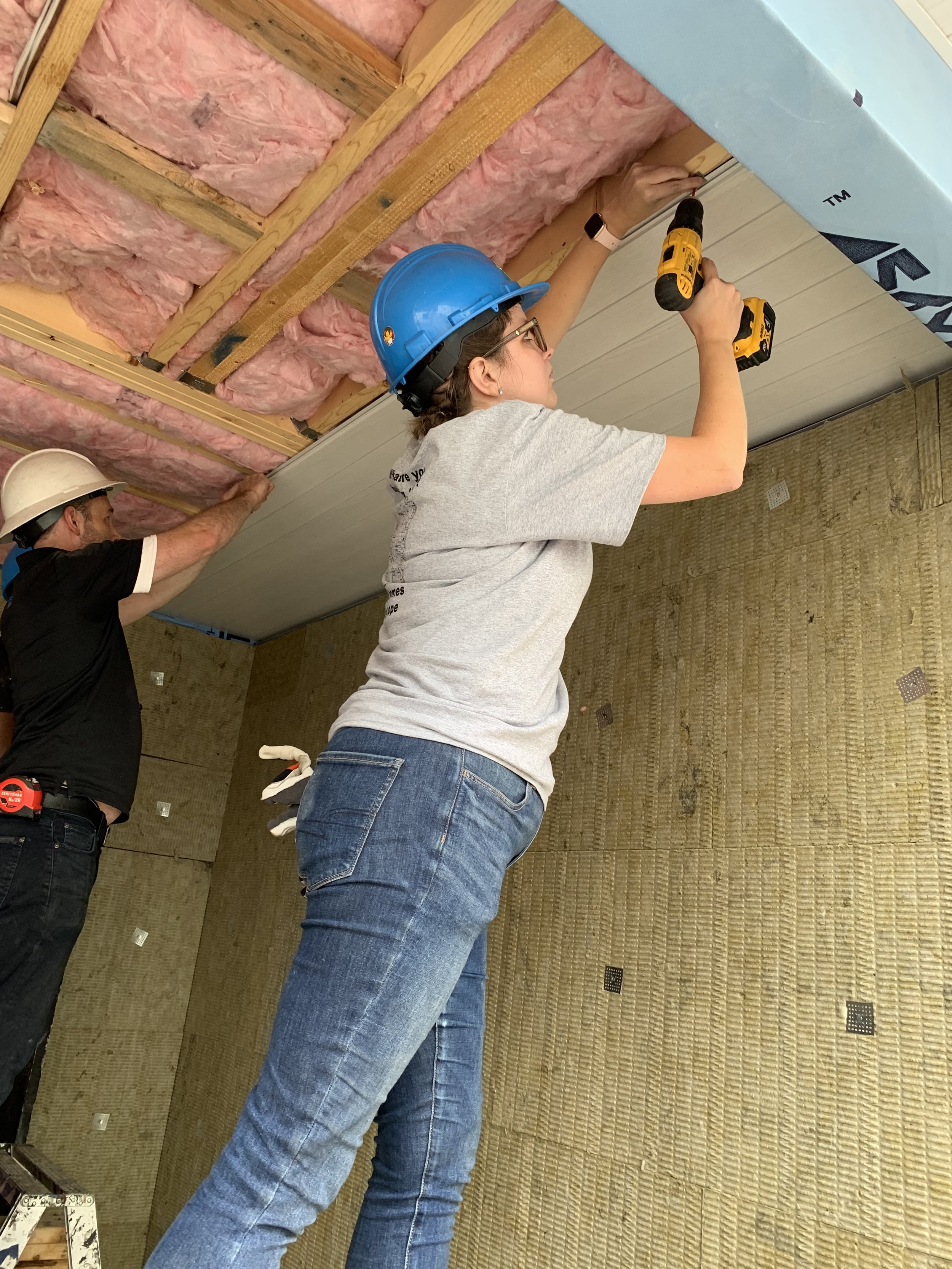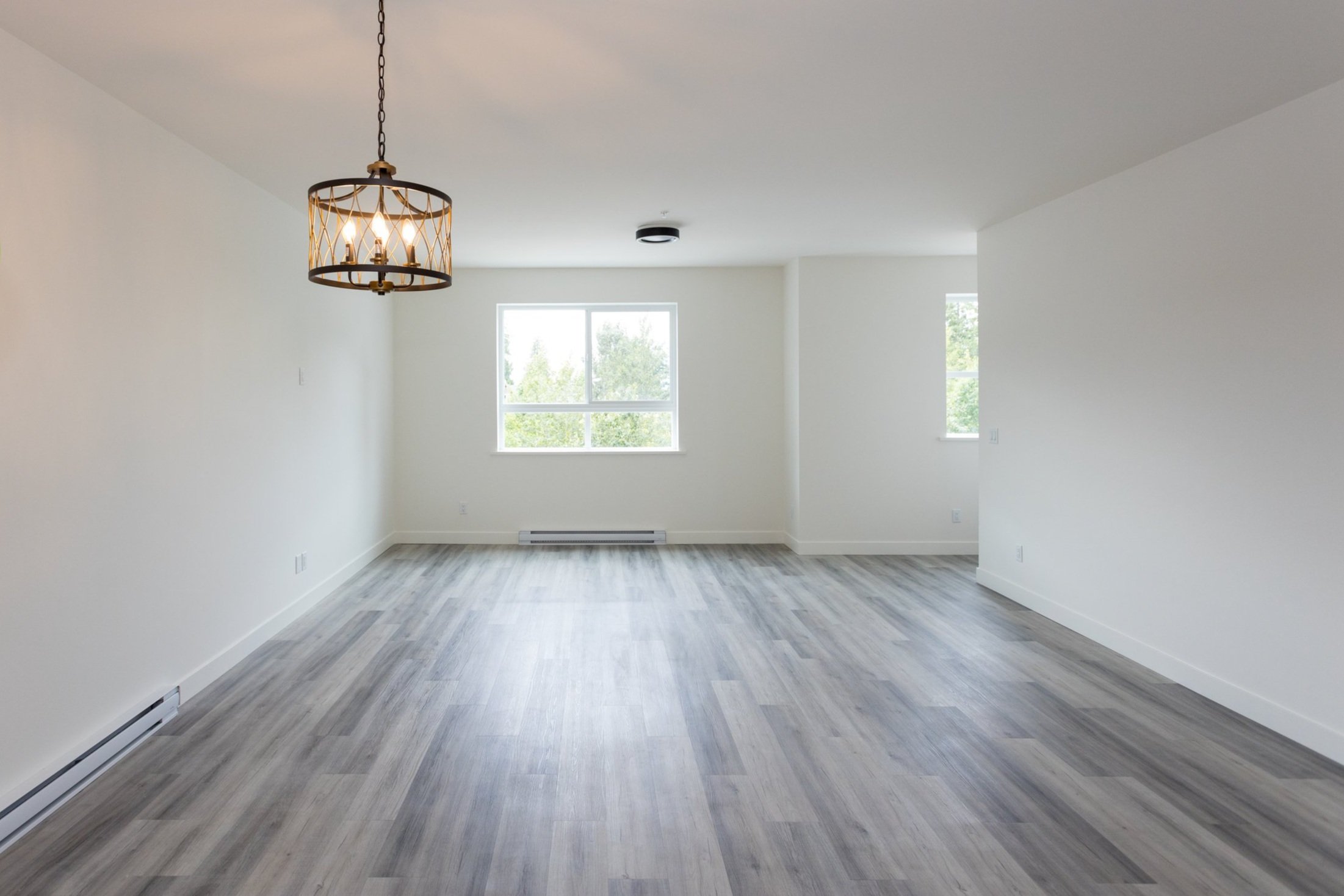Saving Money and the Planet is a Win Win Win
There are many components that go into building a home. Different features can work together to lower energy consumption, reduce greenhouse gas emissions, and shrink a homes’ carbon footprint. We all can play our part, so we’re sharing what goes into a Habitat home and what you can do to improve yours.
HABITAT HOMES
Habitat homes are 30% more energy-efficient than a standard Canadian home. But what does this mean, and what goes into building a Habitat home in order to increase sustainability?
Building Design
In British Columbia, all new construction, building renovations and demolitions must follow the BC Building Code. This code sets minimum requirements for safety, health, accessibility, fire and structural protection of buildings as well as energy and water efficiency.
Habitat for Humanity Greater Vancouver’s new homes are all built to step code 3, meaning they are built with increased energy efficiency. Key elements such as insulation, windows, heating, water heaters, lighting, and other equipment must meet or exceed set standards. Habitat uses a ‘performative’ approach, meaning that rather than looking at each element individually, we use energy software modeling and onsite testing to design and demonstrate that our materials perform better together to further increase efficiency.
These are some key design elements in the homes in Mission:
Heat recovery ventilation design
A heat recovery ventilation system (HRV) provides continuous, balanced, and energy-efficient year-round ventilation to houses. It stabilizes heat and humidity in the homes, reducing the need to open doors and windows which can create extremes in both heat and moisture entering and leaving the home environment. During the winter months, an HRV preheats incoming outdoor air, and in the summer months, this is reversed, with the HRV cooling the air before it enters the home. This process helps with both the energy efficiency and the durability of the building, resulting in long-lasting Habitat homes.
Insulation
Properly insulated homes improve energy efficiency by reducing the amount of energy needed to heat and cool a home. This in turn reduces the number of pollutants such as carbon dioxide, sulfur oxide, nitrogen oxide, and other harmful emissions that warm our planet.
All Habitat homes are thoroughly insulated. The insulation we use comes from recycled materials reducing the need for natural resources. The interior of the homes in Richmond and Mission have fiberglass insulation. The exterior of the homes are insulated with almost 2” mineral woo, both insulations contain a high % of recycled materials.
Windows
Windows can act as an insulator, helping to keep heat inside a building. At the Habitat homes in Richmond and Mission, the windows are double glazed making it difficult for heat to escape with windows or for cold to penetrate into the building. On the busy road-side, the windows have an extra component built in to reduce noise pollution.
Hot water recovery units
These specialized pipes use drained warm household water to preheat the pipes bringing in the external water going into the hot water tanks, reducing the amount of energy required to heat a tank of fresh hot water.
Building seals
The perimeter of Habitat homes are sealed with a membrane to eliminate drafts and create a moisture barrier at critical areas around the exterior.
Sunlight
Habitat homes are designed to maximize sunlight, minimizing the need for electrical lighting and diminishes the need for heating in winter.
No natural gas
Habitat homes in Greater Vancouver do not use natural gas, reducing emissions and the use of non-renewable energy sources.
Location, Location!
Greater Vancouver Habitat homes are built next to transit and are within walking distance to schools and shops. Many Habitat children walk to school together or take the school bus. With close transit links for parents, there is less need for the family car, which can remove 4 tons of pollutants each year. That’s the equivalent of over 15 acres of forest needed to offset the carbon emissions every year!
Quality Choices
Habitat uses quality materials that last longer and reduce the need for maintenance and replacement. This also helps to reduce energy consumption, which benefits our environment and keeps energy costs low for our Partner Families. Here are just some examples of the quality products in a Habitat home:
- All appliances have the Energy Star Appliance rating, meaning families save money on operating costs by reducing the energy consumption without sacrificing performance.
- All are fitted with LED lightbulbs throughout.
- High-quality materials such as Longboard for the soffits, privacy screens and fencing. Longboard is made of aluminum, is 100% recyclable, has net-zero water consumption during manufacturing, and is 100% VOC free meaning there are zero emissions when being produced.
- Hardi plank siding is used on the exterior of the buildings. These planks have a longer lifespan than wood or vinyl siding. This reduces maintenance and the need to replace materials.
- Vinyl plank floors are easily maintained, are extremely durable and have an extremely long life-span and can be replaced in patches if needed versus redoing an entire floor if there is damage.
A greener space
At the Habitat homes in Burnaby, Mission and Richmond, a play area and communal garden are at the center of the community. This provides both a children’s play area and a space for families to grow vegetables together, reducing the need to travel, improving overall mental and physical health and teaching children the value of clean air, water and soil.
All our Habitat homes are surrounded by green landscaping including trees, hedges, and flowers. These provide important homes and food for insects and birds and help to moderate the water flow to prevent flooding and erosion. There are many other environmental and social advantages of green spaces, but a key benefit of trees is their ability to absorb C02, reduce urban heat, and improve the air quality that we breathe.
WHAT YOU CAN DO
It starts with design
If you are building your own home, hire an energy consultant to maximize efficiency at the design stage. Clean BC has several rebates available to help lower your costs.
Grants to Upgrade Your Home
Not many of us will build our own homes, but we can upgrade them to improve performance. There are several government retrofit grants available to help with finances for insulation, air-sealing, heat pumps, solar panels, appliances, draft proofing and more!
• The new federal Canada Greener Homes Grants could help with up to $5,600 in rebates
• The BC Government has grants available to help from $25 to $14,000! Click here to find out what is available in your area
• BC Hydro provides free energy saving kits for eligible low and moderate income households along with offers on new appliances
Here are some small things that we can all do today:
- Check your furnace! If you can’t upgrade your furnace yet, servicing it once a year will make sure filters are replaced and essential parts are cleaned to increase efficiency.
- If you have an electric hot water tank that heats on demand, wrap it in an insulating blanket to reduce heat loss.
- Seal the gaps! Hot air can escape through joints in the ductwork, fill in visible joints in gaps with heating-vent tape.
- Test your windows and doors to ensure they have an airtight seal. Check for drafts by holding a lit incense stick or a candle around window frames and doors. If it flickers, you have a draft. Use caulking around frames, install or replace weatherstripping, and add a door sweep. In colder months, applying exterior window film will increase efficiency even further.
- Use a ceiling fan. In summer months set your fan to turn counterclockwise, this pushes air down to create a breeze. In winter you can switch the direction and set it to a low speed which helps to push the warm air down, heating the room and keep the hot air away from the ceiling where heat escapes.
- Upgrade to a smart thermostat- this can reduce your heating and cooling costs by up to 15%!
- Clean your large appliances! Vacuum the vent at the back of the refrigerator and clothes dryer exhaust a couple of times a year to remove dust which makes the motors work harder, using more energy.
- Upgrade your lightbulbs to LED.
- Remove chargers from the wall once charging is complete, they keep drawing energy if you don’t!
- Switch your shower head to a high-efficiency product.
- Use a power bar to plug your countertop appliance devices into and switch it off at night, it’s easier this way if they are all at one source. Just think your TV, cable boxes, and game consoles can go to sleep at night!
- Use a clothes rack instead of a dryer. If you must use a dryer add a dry bath towel with your garments, and remove after 5 minutes, the towel will help to absorb some of the moisture so clothes dry quicker.
- Recycle! Check with your local municipality and understand what they can recycle. All municipalities have different recycling abilities so it’s important we all check and help to sort our waste to reduce what ends up in landfills. Landfills release harmful gases to the atmosphere that warm our planet.
- Shop at a ReStore! Save other items from landfills by checking out our new and lightly used furniture, building materials, and décor.
Community and Economic Sustainability
Across our ReStores, Rebuild Hub and Habitat Homes, we aim to consistently reduce our impact on the planet, whilst also strengthening our communities. We are building a better future through environmental, economic and social sustainability.
Habitat Partner Families will only ever pay 30% of their total monthly income towards their shelter cost. We provide families with financial literacy training on debt management, RRSP, savings and home ownership helping to secure economic sustainability. When a family is ready to move into the open market, they receive a % of their monthly payments back as equity to use as a down payment. Habitat retains the homes as an asset meaning more families benefit from each home and we can continue to build healthy, happy and vibrant communities.
We are grateful to all of our supporters who donate quality products in kind to our builds, cash donors, and Restore shoppers. To find out more about how you can support click here.


